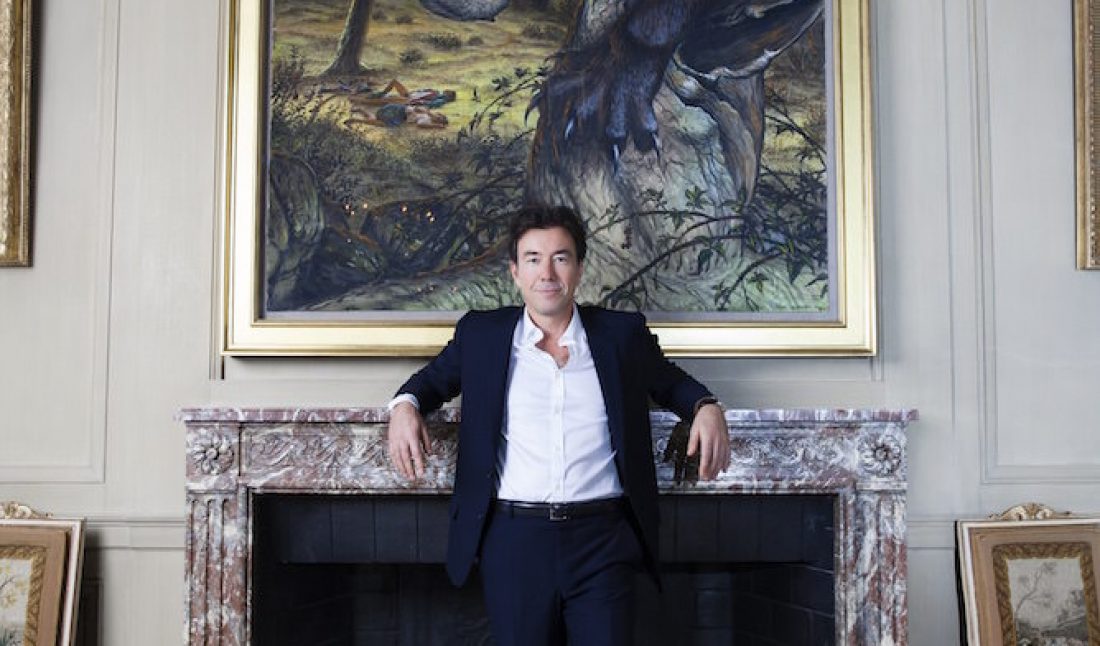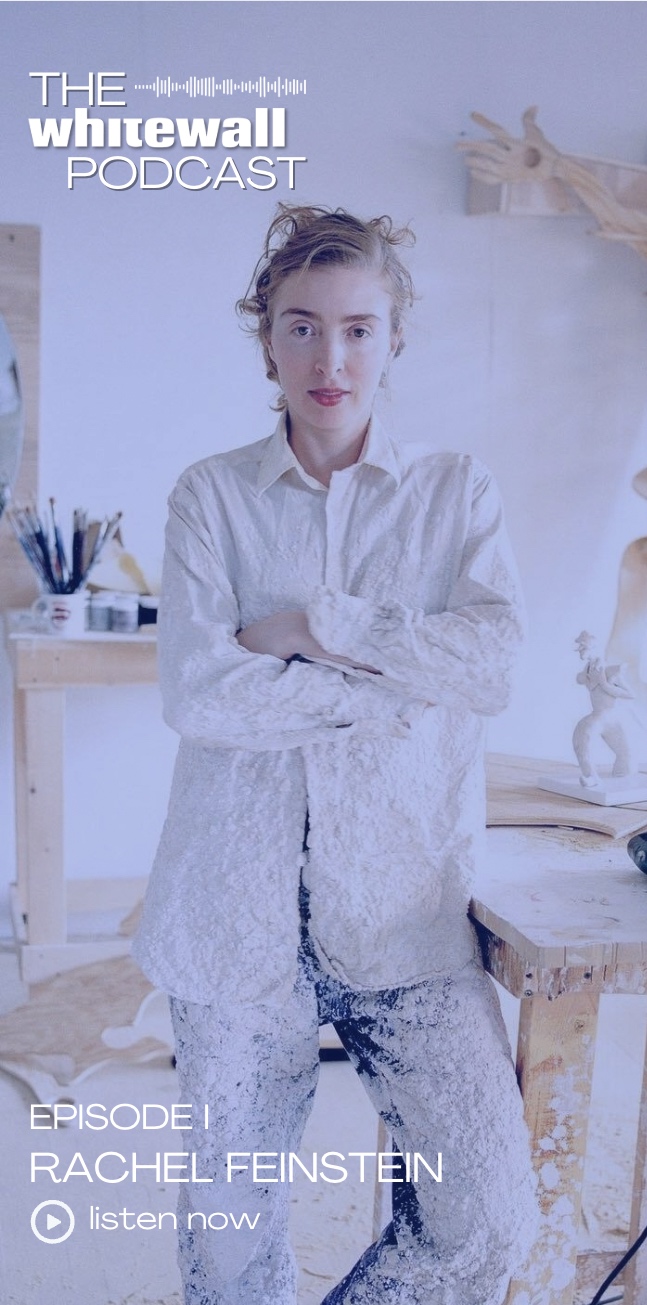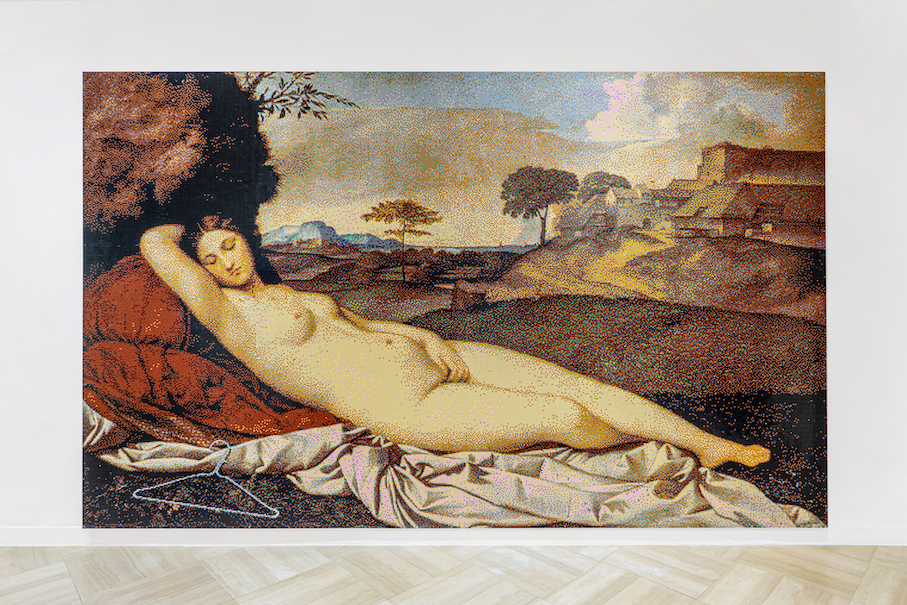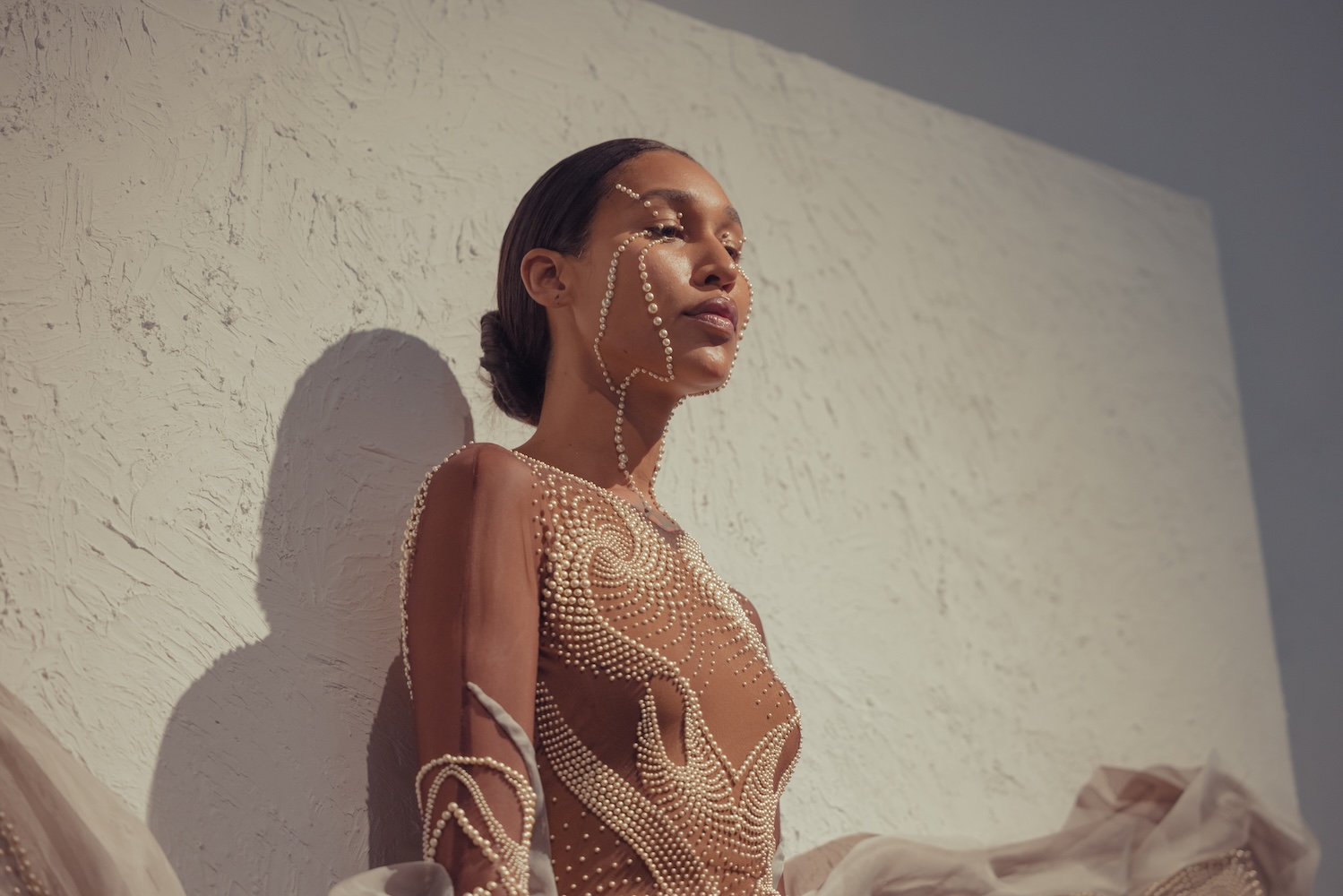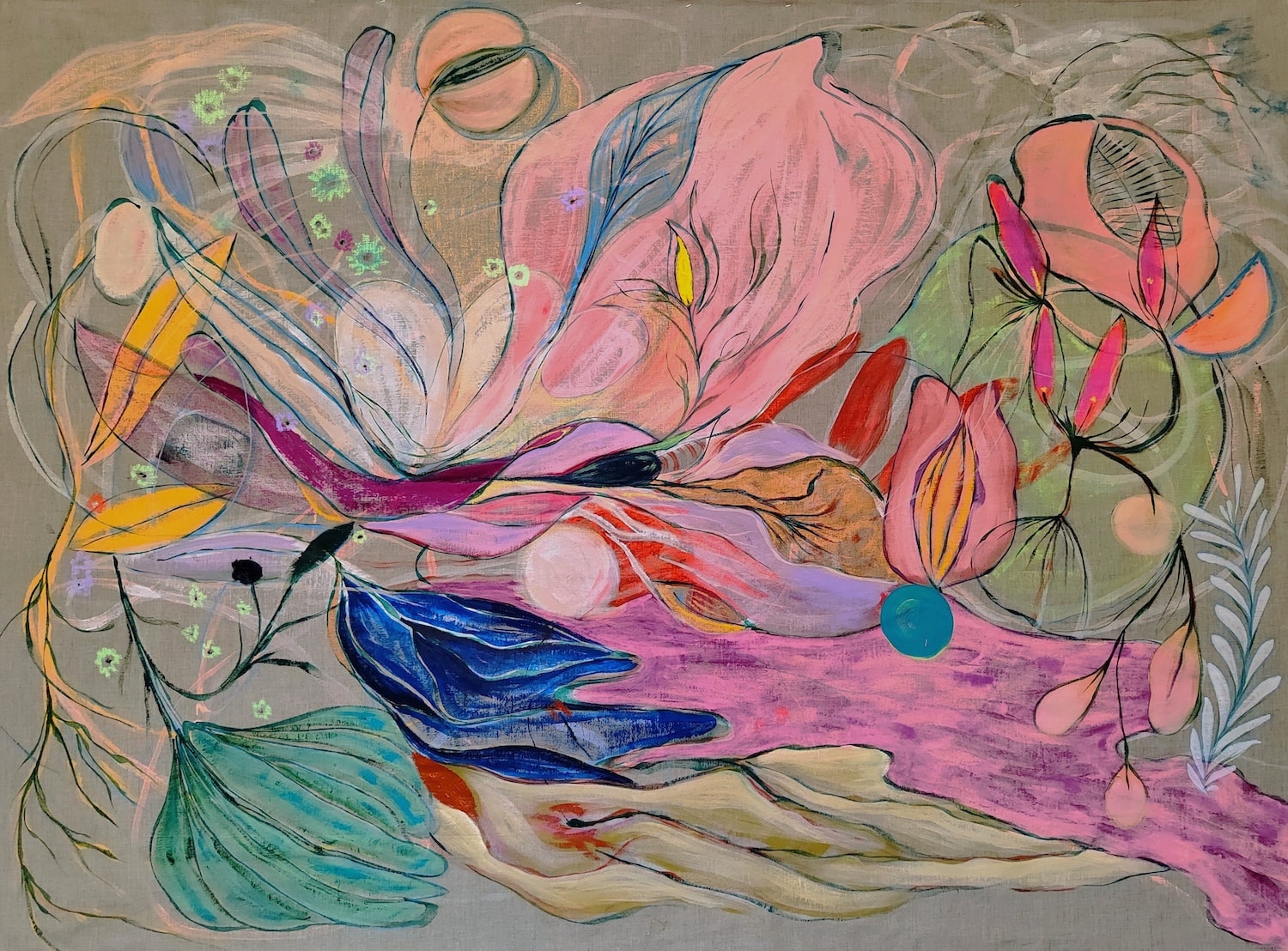As the Grand Palais in Paris prepares to host the contemporary art fair fiac! this week, we thought it would be interesting to check in with the independent curator and the Commissaire d’exposition au Grand Palais, Jérôme Neutres.
WHITEWALL: As an independent curator and within your role at the Grand Palais, you’ve become known for bringing American artists to France. Is that intentional?
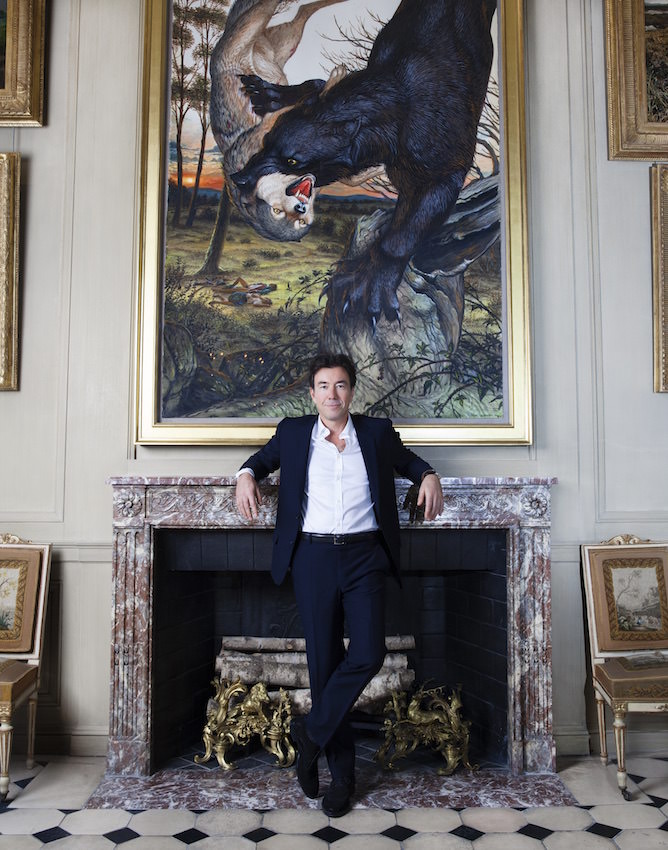 Portrait by Rob Lakow
Portrait by Rob Lakow
JÉRÔME NEUTRES: When I was appointed at the Grand Palais, I was working and living in New York city as the cultural attaché of the French Embassy in the U.S. So at that time I had been living and working within the artistic circles of the states for years. When I arrived in Paris, after having lived abroad for almost 10 years (also in Spain and India), I was quite surprised to see that for many reasons there was a lack of representation of the main artists from America from the last decades and the 20th century, even. I saw that lack as a chance for me.
And so for the last six years we have had several exhibitions at the Grand Palais about American art or about American collectors. We did the Stein collection (2011-12), American collectors that highlighted the avant-garde of the early 20th-century, coming from San Francisco and settling down in Paris. Our Edward Hopper show (2012-13) had the record attendance in the history of the Grand Palais per day. We also presented “American Icons” from the SFMOMA collection (2015). There was a massive retrospective from Bill Viola (2014) and Mapplethorpe (2014). And we are working on a Marina Abramovic retrospective and an Irving Penn retrospective with the Metropolitan Museum of Art.
WW: Why was there such a lack of American artists being shown in France, do you think?
JN: If you ask, why do you think that was the case? There are positive and negative reasons. Positive reasons, are concrete reasons. You don’t have a lot of American icons’ works in the French national collections, now it is too late because they are too expensive. That said, you can loan everywhere, but it is expensive to make a show. On the negative side, I think some curators think that American culture is everywhere, we are totally invaded, so don’t open more windows, in a way. The French prefer to show French people, just like Americans show Americans.
WW: What has the audience response been like from the French audience?
JN: We showed quite a lot of American art this last year at the Grand Palais and we have such visibility because of our location, that now I see that there is suddenly a Bruce Nauman exhibition at the Fondation Cartier, now a Yoko Ono show at MAC Lyon, Keith Haring at Musée d’Art Moderne de la Ville de Paris, and so I’m quite happy to see that there is a sort of revival of the interest from the curators and institutions.
I think the audience has always wanted that. I was extremely positively surprised to see the response for Bill Viola and Mappelthorpe. It was crazy. After four months of showing Bill Viola we had still a long queue in front.
WW: How would you describe your role at the Grand Palais?
JN: I’m not a museum curator. The Grand Palais has no collections so I’m an exhibition curator. The Grand Palais hosts and organizes events and exhibitions: art fairs, antique fairs, fashion shows, events, concerts, and exhibitions. Jean-Paul Cluzel, the President of the Reunion des Musées Nationaux-Grand Palais, when he appointed me as his special advisor for the content, he said to me, “I want you to be my ideas box and my pilot fish.” He wanted someone who had an unusual background to revise, and update things. He said, “It’s like a sleeping beauty, this Grand Palais, and we have to wake it up.”
WW: Aside from showing American artists, how do you think you shook things up?
JN: Well, for example, because I worked a lot with fashion designers previously and I was a lecturer and professor at the French Institute for some years, I strongly pushed to host fashion shows in the Grand Palais. I totally think fashion is part of visual arts and culture. It’s a form of art. The subjects of art, design, architecture, fashion, etc. are good for school, but not in today’s life. Is Patti Smith a rock musician, a poet, or a visual artist? Is Marina Abramovic a filmmaker, a theater persona, a visual person? Bill viola, is he a filmmaker or a painter? It’s not relevant to put one stamp on a person.
We don’t have a permanent collection so we’re not focused or rooted in one kind of art or in one geography. We are quite free. There was a self restriction before and we broke that down. It was super challenging at first, people thought we would lose the audience. I don’t think we lost any people, and we gained in younger generations.
WW: What are you working on next?
JN: At the Pierre Bergé–Yves Saint Laurent Foundation, I curated the show “Jacques Doucet—Yves Saint Laurent, Living for Art,” about the collector seen as an artist; the art of collecting. They both developed a style of installation in their interiors that was like a living museum. They were creating correspondences, matches, ruptures, and I want to re-create rooms from their interiors with the real objects and furniture. These people were really acting as artists—it was installation, to have Cubist paintings next to African masks, Brancusi next to Modigliani.
I curated Walton Ford’s first retrospective in France, at the Musée de la Chasse et de la Nature. He’s also done eight to ten new pieces around the Beast of Gévaudan, the French legend from the 18th century about a monster who was killing young girls in the countryside. I convinced the museum to rehang the museum, displaying Walton Ford throughout. So for the visitor of this museum, it will be like a sort of investigation to see some surprise, some traps. And we invited Walton to select in the storage some elements that were not normally displayed like big traps around the museum.
A version of this interview will appear in Whitewall‘s winter 2016 Lifestyle Issue out in December.







